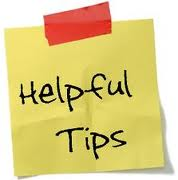Blog Post
A Step By Step Guide Of The Conveyancing Process
When buying property, there is a need to go through the conveyancing process, which is the legal process where property is transferred from one person to another. It can be a daunting process to carry out, and while it is possible to carry out the conveyancing work yourself, this isn’t recommended. However, with the right help, it can be a simple process and here is a step by step guide of the conveyancing process that lays out what you will encounter.
Instructing the conveyancer
This is where the person or party looking to buy a property will find a conveyancer and then instruct them in their duties. The conveyancer will require certain documents and verification at this stage. At this stage, you should also look to inform your estate agent and mortgage provider of your new conveyancer.
The checking of documents
Your conveyancer will receive a number of documents from the solicitor of the selling party and they will check them. These documents can include the contract, the lease, leasehold information, details about fixtures and fittings, property plan and any other documentation.
Carrying out enquiries
A conveyancer will carry out a number of enquiries, including determining if there is a managing agent for the property who is running the property. These enquiries can include any service charges, planned refurbishments and whether there have been any disputes between landlords and leaseholders.
Check the mortgage
At this stage, the conveyancer will receive the offer of a mortgage and will ensure that all conditions are being met.
Requesting any outstanding balances and due amount
The conveyancer will review the file for the purchase and after drawing up a competition statement; they will advise their client on how much money is required to conclude the transaction.
Signing of documents
At this stage, you will attend with your conveyancer to sign a number of major documents, including the contract, lease and mortgage deeds if they are applicable. The conveyancer should go through all of the relevant details at this stage, explaining all aspects of the offer.
Exchanging contracts
At this stage, the conveyancer will meet with the solicitor of the selling party, informing them that you are keen to proceed to conclusion, notifying them of a proposed moving date. Once this has been agreed by all parties, the conveyancer takes steps to conclude the transaction in a legally binding manner.
Completing the deal
At this stage, you will be free to pick up the keys to your new home assuming that all money has been handed over and the deal has been concluded. This means that you are now free to move into your new home. At this stage, the conveyancer will deal with all loose ends, including any additional payments and any stamp duty that needs to be concluded.
After the completion
You are now recognised as the registered owner of the property, and your conveyancer will correspond with the lending party and deal with any surplus deeds.


Leave a comment